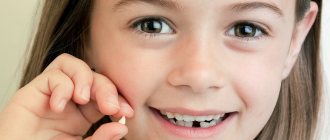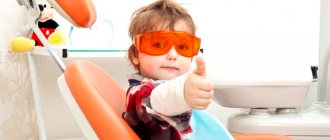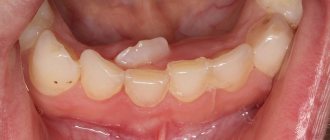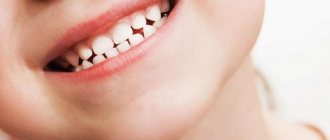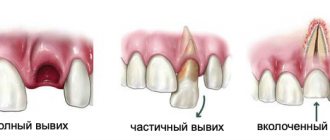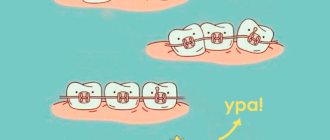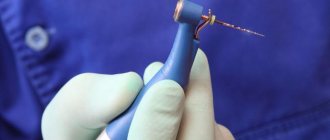Despite the widespread use of digital technologies, in the modern world there is still a place for folk signs, customs, and superstitions. A special place among them is occupied by stories related to children's milk teeth. For example, when the first incisor appears, it was customary for many nations to give a child a silver spoon and be sure to tap it on the emerging tooth. This meant that the baby was ready to meet adult food. Moreover, it was necessary to feed him with this silver spoon. Many signs are associated with their loss.
We’ll tell you where to put baby teeth and whether they can be stored in our article. We will definitely dwell on the interesting signs and traditions of the peoples of the world that have survived to this day.
When does baby teeth change?
The moment when a baby’s lower incisors, as a rule, begin to loosen, can safely be called one of the most exciting in the lives of both children and their parents. Typically, a child's first tooth falls out at the age of 6-7 years. This time for most children coincides with the beginning of school life. This is where the first sign came from: the first tooth fell out, which means it’s time to go to school.
Do not worry too much if the change from milk units to permanent ones does not occur within the generally accepted time frame. They may vary depending on the individual characteristics of the child, the development of his jaw, and the condition of the oral cavity. In this regard, some children begin to lose teeth at the age of five, while others after seven.
Most often, the loss of milk units is preceded by the growth of “sixes”. First, the lower incisors begin to loosen, then the upper ones. That is, their change occurs in the same sequence as growth. So parents have enough time to figure out where to put their baby teeth.
A sign if an adult has a baby tooth
The loss of baby teeth in adults always predicts trouble.
Contrary to the ridicule of ignorant people, baby teeth in adults are not at all uncommon. They can persist for a long time. In some cases - all your life. The anomalous phenomenon is explained by the absence of the rudiments of permanent incisors. This can also happen when they are too deep from the roots of milky specimens. In this case, the incisors cannot push them out and remain inside the gums.
Inadequate development of permanent teeth can be caused by:
- hormonal imbalances;
- hereditary factor;
- disruption of the endocrine glands;
- osteomyelitis of the jaw;
- periodontitis.
It is not at all necessary to part with dairy specimens. If they do not cause concern, there is no need to remove them; they can last for decades.
The loss of baby teeth in an adult always indicates the presence of health problems. Dentists confirm this by recommending an examination of the body.
Superstitions on this score also have exclusively negative interpretations. Among them:
- exposure to other people's negative energy;
- weakening of the aura or a hole in it;
- betrayal of family and friends;
- betrayal, divorce.
Due to the negative consequences, fallen teeth of an adult should not be stored. They are buried or burned, destroying the negative.
Parents' actions when changing primary incisors
Dentists assure that a child whose first teeth are becoming loose does not need pain relief for this process. Although some parents think differently. In fact, before a tooth begins to loosen, its roots dissolve. But discomfort and pain can be caused by a wound formed at the site of a fallen tooth.
Parents of a child whose first tooth has just fallen out can help by:
- Explain that the process of loss is another stage of growing up. Now the child has become very big and can be proud of it.
- Take care of your oral hygiene by rinsing your mouth with a soda solution.
- Warn the child that the wound formed at the site of a lost tooth should not be touched with hands, so as not to cause an infection.
- After eating, suggest rinsing your mouth with warm water. Do this until the wound heals.
What do signs and traditions say?
Curious signs and legends about children's teeth:
- A child born with teeth is a sign that he will have a special gift associated with magic and clairvoyance.
- Too early appearance of a tooth means the birth of a younger sister or brother in the near future.
- If the top one appears first, a brother or sister will be born sooner than in a year.
- Late appearance, according to signs, promises prosperity and a rich future for the tomboy.
- If the cutting takes a long time and the process is poorly tolerated, then your beloved child will be very capricious in the future and a difficult character will be formed.
- After the first tooth appears, parents should give the child a silver spoon as a gift.
- The baby often squeaks with them while eating - a bad omen, promising unpleasant events and minor illnesses in the near future.
- A pronounced gap in the front is a good sign, promising a cheerful character, the absence of serious problems in life, as well as love. If you can insert a coin sideways into the gap, then this is a sign of wealth.
- According to signs, you can speed up the process of teething with the help of talismans made by the mother herself from corals and seashells.
- A wolf fang, which the child must gnaw, can relieve pain.
- If a child’s tooth breaks or crumbles into large pieces, it means that the baby will soon become seriously ill.
- Accidentally knocking it out means successful learning and early discovery of talents.
- Growing up small and clinging closely together is a bad sign, indicating that in the future the child will be greedy and stubborn.
- When your firstborn turns one year old, you need to count your grown teeth. The resulting number is equal to the number of offspring in the family that will appear over the years of marriage.
Do I need to see a doctor?
Ideally, when baby teeth are replaced, they fall out on their own, meaning no removal is required. But in 80% of cases everything turns out a little differently. The permanent tooth begins to emerge after the milk tooth, when it has not yet fallen out. And since he encounters an obstacle on his way, he changes his direction in the wrong direction. Subsequently, this leads to the formation of an incorrect bite in the baby.
To help the baby tooth leave its place faster and free up the permanent one, you need to consult a doctor. Only a competent specialist can surgically remove a unit of dentition correctly. If you try to do this yourself at home, you can damage the gum mucosa and provoke the development of an inflammatory process. You may also need the help of a dentist in the following atypical situations:
- with swelling and severe pain in the gums;
- with bleeding and long wound healing;
- when a tooth is broken or severely damaged;
- in case of ingestion of a unit of the series.
As soon as a child’s tooth begins to loosen, he is most often in high spirits. Very soon the child will be able to show off to his friends how grown up he has become. At this very moment, parents are overcome by another problem, namely, where to put their baby teeth. You should think about this in advance.
What to do if blood appears during tooth loss?
Some parents immediately panic when their baby starts bleeding during the loss of a baby tooth, but this should not be done. This process is considered absolutely normal; it occurs due to the fact that there are a large number of blood vessels in the oral cavity. When a tooth falls out, these vessels burst, and therefore a bleeding process occurs. To stop the bleeding, the following measures should be taken:
- If blood appears, the child should be given a cotton swab or piece of gauze. He must press it to the hole with blood and hold it for a while. Usually the bleeding stops quickly;
- It is not recommended to use hydrogen peroxide to rinse the mouth, because it will only irritate the wound, but will not bring a positive result;
- If the bleeding does not stop and simple manipulations do not help stop it, then you should go to see a dentist;
- In the first period after tooth loss, the child should rinse the mouth with a solution with a weak salt concentration.
Sometimes there are situations when a tooth falls out unnoticed even by the child himself, and he may accidentally swallow it. In these cases, it is worth contacting a dental specialist who will examine the hole and be able to determine whether the tooth has completely fallen out or whether part of it has broken off. If it turns out that the tooth has fallen out and the child has no complaints, then soon enough it will leave the body naturally.
Rinsing with a weak saline solution will disinfect the oral cavity and inflammation after the loss of a baby tooth.
Where to put a lost baby tooth?
As you know, in most children the lower primary incisors are the first to leave the dentition. And even if this event did not happen at home, but in a dental clinic, the doctor is obliged to give the child his tooth. And already at home, mom and dad will decide for themselves what to do with the child’s fallen baby teeth. But most parents don’t dare throw it in the trash.
Many mothers carefully store objects that remind them of the first years of their baby's life. These include an ultrasound picture taken during pregnancy, a tag from the maternity hospital, and the first curl cut at 1 year. It is along with these things that most mothers prefer to store the first tooth that falls out.
If parents are superstitious enough, they can conduct a real ritual of farewell to the milk element with their child, which he will remember for the rest of his life and will be able to pass on this tradition to his children. To do this, you should get acquainted with the signs of different peoples of the world in advance.
Signs of different peoples of the world
In Asia
The signs of Asian peoples are especially interesting. It is customary for them to throw the first milk teeth, which fell out in the upper row, onto the roof of the house, and to place the lower ones under the threshold at the entrance. There is a belief that this way you can protect your own home from evil spirits who will not be able to penetrate inside and steal the soul of a sleeping child.
In Rus'
In Rus' they believed that if parents throw out their first baby teeth, their children will soon forget the way home. Their fate will be difficult, and there will be serious trials in life. It was believed that a discarded tooth was equivalent to a discarded ruble. The wealth leaves such a family, and expenses increase. Whether there is any rational explanation for this or whether everything remains at the level of superstition - one can only guess.
In Europe
When the first milk tooth falls out, signs indicate the need to surrender it to the elements: fire, water or earth. Many nationalities do not recommend storing it, since it is quite possible to influence a person through biological material. Let us remind you that these are just superstitions that you can believe in or not believe in. You should not concentrate your attention on this as much as possible, much less turn a natural physiological process into a mystical event.
Is it possible to store baby teeth?
Until recently, it was believed that elements of the dentition that had fallen out independently or surgically removed should be immediately disposed of. Black magicians, witches and sorcerers could steal them from home and plot or damage them. That's why parents didn't stand on ceremony about where to put their baby teeth. They were thrown away or buried deep in the ground.
Today, the opinion about methods of disposal of fallen baby teeth has changed dramatically. The fact is that British scientists have learned to extract stem cells from pulp. It has been proven that their potential is much stronger than biomaterial taken from the umbilical cord of a newborn. To find out more about this, parents can contact a stem cell storage bank. Biomaterial is stored in this medical institution at a temperature of -196 °C. Frozen cells can later be used in the treatment of serious diseases, including bone marrow transplantation.
What to do with a child’s baby teeth: folk signs
From time immemorial, each nation has had its own traditions and customs regarding the storage of fallen child teeth. For example, nomadic tribes always buried them. Therefore, there were no questions about what to do with the child’s baby teeth. The parents had to dig a deep hole, put the tooth in it and cover it with earth. It was believed that this was the only way to protect the baby from damage and misfortune.
The peoples of Britain had their own traditions regarding where to place a child's baby teeth. Folk customs boiled down to preventing damage to a child using a tooth. For this purpose, any milk element of the row was burned immediately after falling out. It was believed that in this case a strong and healthy one would quickly grow in its place.
Another sign common among the British in ancient times is associated with animals. It was believed that the tooth should be destroyed, hidden or buried so that a predator would not get it and eat it. If this happens, the child will grow fangs, like an animal.
Today all these signs seem strange and funny, but our ancestors sincerely believed in them and, worried about the fate of their children, unquestioningly carried out all these actions.
Can I just throw it away?
If you simply throw out the first baby tooth, your baby will suffer from insomnia
According to superstitions, this should not be done. It has been noticed that if you simply throw out the first baby tooth, the baby will suffer from insomnia, and new ones will grow incorrectly.
Folk omens strongly advise against neglecting lost baby teeth. In recent times, it was customary to collect all the teeth that fell out during life (they were then buried with the person after his death).
According to legend, you need to present them in the afterlife. In case of shortage, the soul will have to return to the real world in search. From a practical point of view, baby teeth are a storehouse of stem cells that can save a person’s life. But there are other reasons.
Another sign warns: if the tooth falls into the possession of any animal, then the person will have animal fangs.
And from real superstitions it follows that a grown-up child will move far and forever from his parents who neglected his first baby tooth that fell out.
Folk wisdom does not stop there, and offers a number of signs about the gap between the upper teeth:
- The presence of a gap in a child’s front teeth was a sign that the person was destined to become a merry fellow, a joker - they say about such individuals: “the life of the party.”
- When a gap appears in a child, this portends increased development of his intellectual abilities and speaks of a good character.
- Another interpretation of the gap between the teeth is a sign of an insidious person, prone to deceit, capable of deception.
- If a coin passes freely into the gap, this indicates a future rich man (English sign).
- The gap foreshadows poverty and an unhappy life (Chinese omen).
- Rare teeth are an indicator of an irresponsible and frivolous person.
- Small ones, who are cramped in their places, reveal a stingy person, characterized by increased “harmfulness”, who is also prone to often falling in love.
- Tooth decay (for a child or adult) is a harbinger of loss, or a warning that you are busy with an impossible task.
Most often, it is recommended to bury a lost baby tooth (not necessarily outside). A flower pot is suitable for this purpose.
Parting with dairy is stressful for the baby. To neutralize unpleasant feelings, parents come up with different stories and teach the child to “say goodbye” correctly.
Giving a milk tooth to a spirit, fairy, or mouse is an ancient tradition. If the baby gives away the loss in an organized manner, he should receive a gift. The purpose of this ritual is to support the child, create a special mood in him, and simply make him happy.
Give it to the fairy
This tradition was invented by Louis Colom, a writer of the 18th century. He composed a fairy tale for the young king of Spain when the high-ranking offspring lost his first milk at the age of 8. The story was about a fairy who picks up a baby’s fallen baby tooth under the pillow and leaves a nice gift in its place.
When telling all these fairy tales to your child, do not forget to add that whole teeth in good condition are valued more than damaged ones, and you can get better gifts for them. This way the child will be more willing to keep his mouth clean.
Pass to mouse
Our great-grandmothers also advised us to say: “Mouse, mouse, take away the milk tooth, and bring me a new one, bone and strong,” and throw it under the floor. Most likely, this sign is due to the fact that rodents have strong incisors, and the child will grow equally strong teeth.
And the appeal specifically to the mouse is due to the fact that these small animals were widespread in villages. They settled their homes under the floors and behind the stove. Therefore, the teeth were thrown into the oven or into the basement so that the mouse could surely discover the treasured gift.
This tradition (giving a tooth to a mouse) existed not only in Russia, but also in Germany and other European countries. And the Slavs, when they threw a fallen tooth into the stove, hoped that a brownie would pick it up.
Despite numerous traditions, when changing teeth, it is a good idea to consult a dentist
Why give a tooth to a mouse?
Among the Slavic peoples, one of the signs of where to put a baby tooth was associated with throwing the fallen unit behind the stove. This was done for a brownie or a mouse. They had to take the baby tooth and bring the molar tooth in return.
In some European countries, they also adhere to the custom of placing the tooth under the pillow at night. But it’s not the kind tooth fairy with wings and a magic wand in her hands who should take it, but a little mouse. In France she is called La Petite Souris, and in Spain - Perez. Traditionally, at night, an unnoticed little mouse sneaks under the pillow to exchange a tooth for money or treats. Children eagerly await the appearance of this rodent in order to receive something nice as a gift.
Who is the tooth fairy?
In many countries of Northern Europe, America and Canada, they adhere to a different sign about a child’s baby teeth. People here know where to put the dropped element of a row almost from birth. Kids eagerly wait until their tooth begins to loosen so that after it falls out, they can put it under their pillow. In return, the good fairy should bring a coin there. This tradition is one of the most widespread and popular today. By the way, the fairy tale about the tooth fairy and the mouse Perez was invented by the Spanish writer Luis Coloma for the eight-year-old King Alfonso VIII, who lost his first baby tooth.
The myth of the good sorceress is a useful one. It helps the child overcome the fear of a lost tooth and allows him to receive monetary or other pleasant compensation for the loss.
Signs when the first tooth appears
There are several different signs among people that refer to the appearance of a child’s first incisors. The usual period in which they begin to grow in babies is the age of 5–6 months.
If the tooth erupted earlier or later, this was a reason to judge the possible future of the child. We paid attention not only to the time of appearance, but also to the sequence of filling the dentition and the structural features of the jaw:
- If the first tooth comes out beyond y - the birth of a brother or sister a year after the baby was born.
- If teeth appeared with a delay relative to the traditional period (later than 7 months), the child was predicted to have talent and great achievements in a certain area.
- If a coin, turned edgewise, was placed between the baby’s two central upper teeth , the parents believed that their child would be successful with the opposite sex. The second interpretation is luck in adult life.
- The baby was born “toothy” or he first developed fangs - a bad sign, foreshadowing imminent death or service to evil in adulthood. But there is also the opposite interpretation - in adulthood a person will be very successful and lucky.
These superstitions can hardly be called relevant, because dentists have long proven that the speed of tooth formation and the structure of the jaw is determined by the innate characteristics of each child, and not by mystical reasons.
There is a belief that will help young mothers determine the moment when they can start complementary feeding.
The sign says that when the first tooth comes out, the baby should be given a spoon made of silver, and be sure to knock on the tooth with it. This action symbolized that the baby could already eat something other than his mother’s milk.
Do you need a gift?
Regardless of where the mother decides to put her child’s baby teeth, where to put them or to throw them away altogether, it will be very good if she prepares some surprise for the baby. This will make it easier for him to bear the loss.
If a child puts a tooth under his pillow, the first thing he will do when he wakes up is check to see if the mouse or tooth fairy took his treasure. If yes, then a coin or present should appear in this place. This could be a book, a coloring book, a set of pencils, paints or markers. Parents should choose gifts that can easily fit under the pillow. If the gift is too large, then it will have to be placed next to it.
It is not recommended to give chocolate, sweets and other sweets. The tooth fairy cares about the health of children's teeth, so she should give them only useful gifts. And as you know, sweets quickly begin to deteriorate your teeth. It is better to put a coin under the pillow, and for it the child will buy what he likes.
Traditions of the peoples of Asia
In many Middle Eastern countries, children do not leave their lost tooth to a mouse or fairy. Instead, they throw it up towards the sun. It is believed that this will allow teeth to grow faster and stronger than before.
A similar sign of where to put a lost baby tooth is followed in Japan. To get a new one instead of the old one, you need to make a good straight throw. But the bottom tooth should be thrown up, and the top one down, that is, in the opposite direction.
Tooth on the roof
Throwing up fallen milk elements is a fairly common sign among many nations. But children in some countries strive precisely to throw a tooth onto the roof. This is done in Greece, Brazil, Ethiopia, and Sri Lanka. But in China, Korea, Vietnam and India, this is done only with the lower teeth, and the upper ones, on the contrary, are thrown under the bed or even hidden in cracks in the floor. And every baby knows where to put baby teeth.
You need to throw your teeth onto the roof so that a bird or squirrel can grab it faster. Then a new one will very quickly grow in its place. And a tooth under the bed, most likely, can easily be dragged away by a mouse.
Maybe the tooth needs to be hidden?
Not everyone wants to give their lost treasures to an animal or some fairy-tale creature. In Nepal it is considered very bad luck if a bird takes a tooth and does something with it. In this country, children come up with their own secret storage places that even adults don’t know about.
In Malaysia, fallen milk teeth are also hidden, but only in the ground. The kids bury them, thus returning them back to nature.
In Turkey, parents believe that with the help of baby teeth they can influence their child’s choice of future profession. So, they bury the fallen elements near the hospital if they want their child to be a doctor, or near the school if they dream of seeing him as a teacher. Football fields are especially popular.
Option 3 – throw it away in the forest
This method, according to many nationalities, is one of the most correct. You need to set aside time and take the child to the forest, where you invite him to make a small hole under any tree he likes and leave the fallen tooth there. According to legend, such a ritual will allow you to connect with nature as much as possible, receiving the energy of the forest for a prosperous and happy life.
There are also children who flatly refuse to part with their teeth. What to do with baby teeth that have fallen out? There is an alternative to the forest - this is to plant a flower in a pot. Children adore this procedure, and when they see a flower blooming, they are sure that it is their valuable contribution that contributes to all this. The fallen treasure is placed in a beautiful flowerpot, covered with earth, and then seeds or a shoot of a flowering plant are planted. Children take an active part in the process and happily care for the flowerpot, watering the ground.
In some nations, it is customary to bury children's first milk teeth in the sand or throw them into the river. It is believed that the earth and water must take what they have created in order to even out the balance. To believe in it or not is the business of every adult. For children, it is more interesting to create some kind of adventure that will allow them not to be afraid of teeth falling out.

